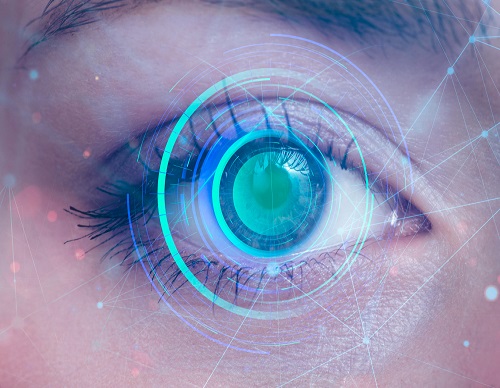Glaucoma is a group of eye conditions that cause damage to optic nerves, which is crucial to ensure good vision. The cause of this damage is usually excessively high pressure inside the eye. Glaucoma is among the most common causes of blindness in those over 60. It can happen at any time, but it is more prevalent among the elderly. There are many forms of glaucoma that have no signs of warning. The impact is slow enough not to notice a change in sight until the condition is advanced.
Since the loss of vision due to glaucoma cannot be reversed. Hence, it’s essential to undergo regular eye exams, including eye pressure measurements, to ensure that a diagnosis can be made in the early stages and treated accordingly. If glaucoma is detected in the early stages, vision loss can be stopped or even prevented. If you’re suffering from the condition, you will likely require Glaucoma Disease Treatment throughout your life.
Causes of Glaucoma
Glaucoma condition is the result of damage to the optic nerve. As this nerve gets weaker, there are blind spots that appear within your visual field. Doctors still don’t know the exact reason behind Glaucoma; the nerve damage is often due to increased pressure in the eye. Eye pressure can be elevated caused by the accumulation of an eye-related fluid that runs through the eye’s interior. The internal fluid drains via a tissue called the trabecular meshwork, located at the point where the cornea and iris meet. If fluid production is excessive or the system for drainage fails to function correctly, it cannot flow out at the normal rate, and eye pressure rises. Glaucoma tends to be a part of families. Researchers have identified genes associated with the high pressure in the eyes and damage to the optic nerve for some individuals.
Diagnosis
Glaucoma tests aren’t painful and do not take long. The eye doctor will examine your vision. They’ll apply drops to widen (dilate) your eyes. They’ll look at your eyes. They’ll look at the optic nerve for signs of the condition known as glaucoma. They might take photos to detect any changes during your next visit. They’ll conduct a test known as tonometry to measure the pressure of your eyes. They might also perform an eye test called a visual field to determine if your eyes have lost your peripheral vision. When your physician suspects that you have glaucoma and wants to rule out other causes, they can order imaging tests for the optic nerve.
Treatment for Glaucoma
The eye damage that is caused by glaucoma cannot be reversed. However, treatment and regular eye exams can reduce or prevent vision loss, particularly when you are diagnosed with the complaint early consult the Best Vision Eye Hospital for treatment. Glaucoma is treated by decreasing the pressure in your eyes (intraocular pressure). In the case of your particular situation, your options might include prescription eye drops, oral medication, laser treatments, surgical procedures, or a combination of all of these.
1. Eye Drops
This eye disease treatment typically begins with prescription eye drops. These can reduce eye pressure by enhancing the way the fluid is removed from your eyes or by reducing how much fluid your eye produces. The level of low eye pressure must be at a minimum; more than one of the below eye drops may require a prescription.
Prostaglandins
These classes can increase the flow of fluids in the eyes and reduce your eye pressure. The possible side effects are mild irritation and redness of the eyes and darkening of the eyelids, darkening the pigment of the eyelashes, and blurred vision eyelid skin.
Beta Blockers
These decrease the production of fluid within the eye, reducing the pressure inside the eyes (intraocular pressure). The possible side effects are difficulty breathing, a slower heart rate, decreased levels of blood pressure, and fatigue.
Alpha-adrenergic Agonists
They reduce the amount of fluid in your eye, and enhance the flow of the fluid that is in your eyes. The possible side effects are abnormal heartbeat, elevated blood pressure and fatigue, as well as swelling, red or itchy eyes, as well as dry mouth. This type of medication is generally prescribed daily however, it can also be ordered for three times per daily.
Carbonic Anhydrase Inhibitors
These medications help to reduce the production of fluids in your eyes. Some possible side effects include unpleasant metallic flavor, frequent urination, and tingling of the toes and fingers.
Rho Kinase Inhibitor
This class of medications reduces the pressure of the eye by reducing the rhokinase enzymes that are responsible for the increase in fluid. It is available under the brand name Rhopressa and is recommended for use once per day. Eye irritation, eye redness and the formation of deposits in the cornea.
Cholinergic Agents
These agents also increase the flow of fluid from your eyes. The side effects can include headaches, eyes, eye pain, small pupils, fuzzy or blurred vision, and near-sightedness. This type of medicine is typically prescribed up to four times every day. Due to the possibility of adverse side consequences and the necessity for frequent use throughout the day. Reach out to the best hospital to get the treatment that suits your condition.
Oral Medications
If the eye drops on their own aren’t enough to bring your eye pressure to a required level, then your doctor might prescribe an oral medicine, which is typically one that inhibits Carbonic Anhydrase. Side effects include frequent urination, tingling in the fingers and toes, nausea, depression and kidney stones.
Surgery and Other Options
1. Laser Therapy
Laser trabeculoplasty may be an option in the event of open-angle glaucoma. Doctors will use a tiny laser beam to unblock the blocked channels in the meshwork called trabecular. It could take several months before the full impact of this procedure is evident. Reach out to a nearby hospital to get Glaucoma Laser Surgery in Coimbatore.
2. Filtering Surgery
Using the surgical procedure known as a trabeculectomy. Your surgeon opens the eye’s white (sclera) and then removes a portion of the trabecular meshwork.
3. Drainage Tube
During this procedure, the eye surgeon places an eye-shunt tube that is small in your eye to eliminate excess fluid to reduce the pressure of your eye.
4. Minimally Invasive Glaucoma Surgery (MIGS)
The doctor may recommend the MIGS procedure to reduce the pressure in your eyes. The procedure generally requires less postoperative care and is less risky than trabeculectomy or installing an eye drainage device. They are typically used in conjunction with cataract surgeries. Several MIGS methods are available. Your doctor will discuss which option might be suitable for you.
You’ll have to visit your doctor to get regular check-ups following your procedure. In the future, you might require additional courses if the pressure in your eyes increases or if other changes happen to your vision.



